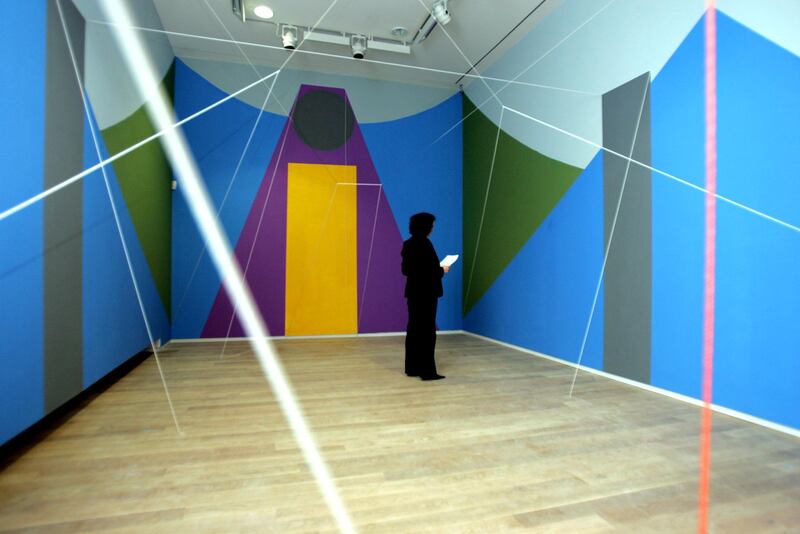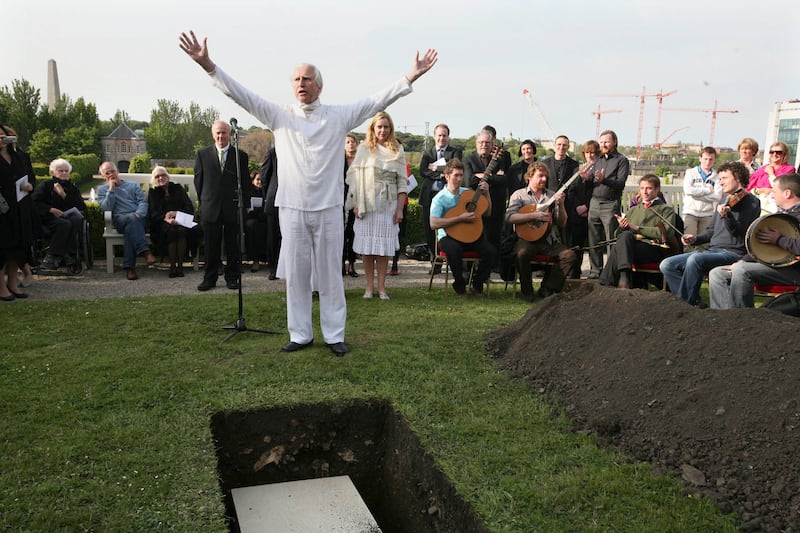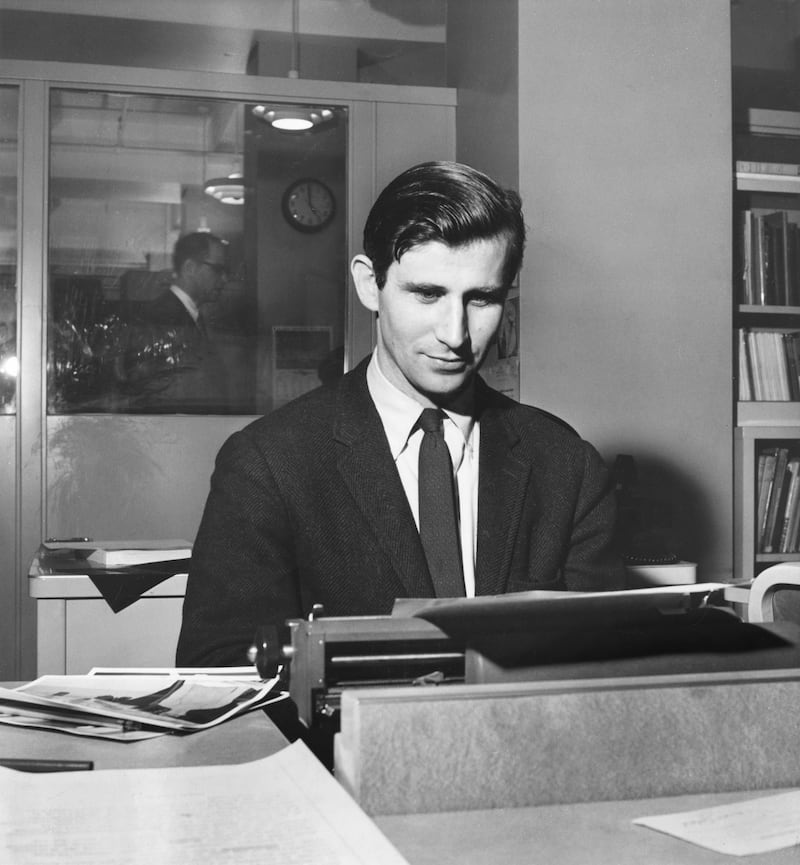Brian O’Doherty, the polymath who in the early 1960s left his Irish medical career behind to reinvent himself as a leading figure in the New York art scene, both as a critic and as a creator, has died at his home in Manhattan. He was 94.
Mark Orange, a close friend, confirmed the death.
O’Doherty, who died on November 7th, made his mark in a wide range of cultural endeavours: he worked as a journalist, an editor, an artist, a documentarian and, late in life, an acclaimed novelist.
He arrived in New York in 1961, just as the postwar ebullience of abstract expressionism was giving way to more conceptual, theory-driven movements. As an art critic for the New York Times, he championed emerging artists like Eva Hesse and established names like Mark Rothko – as well as the occasional throwback like Andrew Wyeth or Edward Hopper.
‘I am divorced at 60, envious of my ex-husband’s new life and struggling with loneliness’
Look inside the most expensive house sold in Dublin so far this year
‘I learned about Irish time. People arrive late and think they are on time’
Bishop Casey’s Buried Secrets review: ‘He had no fear of being caught’
A restless spirit, O’Doherty left the New York Times after just three years, eager to make his own work. He was a great admirer of Marcel Duchamp, and one day he cold-called the artist to invite him to dinner. Duchamp accepted. Afterward, O’Doherty took an electrocardiogram of the artist’s heart, signed the printout and presented it as a piece of art, in homage to Duchamp’s famous ready-mades.
I deeply believe people are capable of much more than the one role they assign to themselves. There is much more that people can do
— Brian O’Doherty
O’Doherty quickly became a leading figure in the conceptual-art movement, creating cerebral works that drew on disparate sources like chess, geometry and Ogham, the early medieval Irish alphabet.
[ Brian O’Doherty: ‘I’ve always led parallel lives’Opens in new window ]
Fittingly for an immigrant to the United States, many of his works dealt with the theme of translation and transformation. Among his best-known work was an ongoing series of “rope drawings”, in which he created the three-dimensional frame of an abstract shape with nylon rope.

Another series, which he called “structural plays”, invited viewers to conduct a programme of physical movements, the order of which he derived from formulas using things like Ogham and chess notation.
Those works were of a piece with his second book of criticism, Inside the White Cube, first published as a trio of articles in Artforum in 1976. He argued that the white walls of the contemporary art gallery reduced the works on display to commodities and the viewers to consumers, and he challenged artists to resist – for example, by taking over more of the exhibit space, as he did with his rope drawings.
[ Brian O’Doherty: ‘Ireland does not appreciate its foreign achievers’Opens in new window ]
O’Doherty’s work might be even better known had he not suddenly switched in 1972 to using a pseudonym, Patrick Ireland. He chose the name in recognition of Bloody Sunday, the massacre that year of 14 unarmed civilians in Northern Ireland by British soldiers.
To his gallerists’ consternation, he insisted that he would continue using the pseudonym for his artwork until the British military left Northern Ireland. He finally “buried” Patrick Ireland in 2008, in a ceremony at the Irish Museum of Modern Art, in Dublin, during which pallbearers carried an effigy of O’Doherty as Patrick Ireland to a grave in the museum’s garden.

In 1992 O’Doherty made yet another career change: he published his first novel, The Strange Case of Mademoiselle P. The book drew critical acclaim; Michiko Kakutani of the New York Times praised its “musical and patterned” prose.
His second novel, The Deposition of Father McGreevy (1999), was one of six books shortlisted for the 2000 Booker Prize, though he lost to Margaret Atwood’s The Blind Assassin. (It was also a finalist for the Bad Sex in Fiction Award, presented by the British magazine Literary Review, but lost that one too.)
A noted raconteur and a popular speaker, O’Doherty bore his erudition and polymathic talents lightly. “I always found multiplicity available to everybody and greatly unused by everybody,” he said in a 2018 interview with Frieze magazine. “I deeply believe people are capable of much more than the one role they assign to themselves. There is much more that people can do.”
I was hot. Then you get cold, you cool off. Then you get hot again. For some reason I’m hot again right now. You get neglected, you get rediscovered. That’s the usual metabolism of an artist’s life
— Brian O’Doherty
Brian O’Doherty was born on May 4th, 1928, in Ballaghaderreen, Co Roscommon. He grew up in Dublin, where his father, Michael O’Doherty, was a regional school inspector. His mother, Martha (Brennan) O’Doherty, was a nurse.
Brian O’Doherty studied medicine at University College Dublin and, after graduating in 1952, worked as a resident in a variety of hospitals, including in a paediatric cancer ward. By then he had begun making art in his spare time, and the stress of his hospital work pushed him to consider a major life change.

Looking for something different, he received a yearlong fellowship in experimental psychology at Cambridge University, which he completed in 1957. The next year he moved to Cambridge, Massachusetts, to study public health at Harvard.
By the time he received a master’s degree and, in 1960, O’Doherty had largely left medicine behind. He applied to be the host of a half-hour programme about art, broadcast on the public television station WGBH in Boston. He got the job thanks to the support of his predecessor, Barbara Novak, whom he then started dating.
[ Modern Ireland in 100 Artworks: 1967 – Aspen 5+6, by Brian O’DohertyOpens in new window ]
He and Novak, an art historian, married in 1960. She is his only immediate survivor.
When Novak moved to New York City for a position at Barnard College, O’Doherty followed her, and on the strength of his work in Boston, the New York Times hired him as a critic, instantly establishing him as an authoritative voice on the city’s art scene.
In 1967 he edited an issue of Aspen, an experimental multimedia “magazine” with multiple elements packaged in a box. O’Doherty assembled phonograph and Super-8 film recordings, pieces for a wooden maze and a series of original critical essays – including one, The Death of the Author, by the French writer Roland Barthes, that became a foundational text of poststructuralist literary theory.
O’Doherty later edited the magazine Art in America, provided cultural commentary for the Today show on NBC and worked for nearly 30 years as a part-time administrator for the National Endowment for the Arts. In 1983 he won the grand prize at the Montreal International Festival of Films on Art for his documentary Hopper’s Silence, about the artist.
Although his career as a visual artist rose and fell with the times, O’Doherty didn’t seem to mind, accepting the vagaries of aesthetic trends as part of his chosen path.
[ One man and his aliasesOpens in new window ]
“The 1960s and 1970s was the height of my reputation,” he told The Irish Times in 2014. “I was hot. Then you get cold, you cool off. Then you get hot again. For some reason I’m hot again right now. You get neglected, you get rediscovered. That’s the usual metabolism of an artist’s life.” – This article originally appeared in The New York Times




